Today was painting day. My first task was to finally decide which version of this paint scheme I would execute. As I mentioned earlier, there are several versions of the paint scheme used on this plane, all based on the research of whoever's book you are using. All indicated that there are no photos of this particular plane, so everything is based on research. The decal instructions offered yet another paint version, but indicated that the Japanese pilot who flew this plane in the war remembered (in the 1960s) some specific markings that were on his plane. The problem is that he remembered markings that were used by by a unit he had never been assigned to. The decal set I purchased for this plane has decals available to add these questionable markings, but point out that they don't match known research. So, I decided to use a scheme that is a composite of several sources: black paint on top with gray on the belly, yellow leading edge stripes, and white panels under the national markings. Most sources show this plane with a dark green rudder, so this would also be part of the paint scheme. This scheme would allow a little color contrast on an otherwise drab color, although it would mean a lot of masking.
Before beginning the paint session, I wanted to make sure everything was ready to go. I was glad to see that the acrylic putty I used on the fuselage/wing joints worked perfectly. I love this stuff. Put it into the seam to be filled, let it dry for a few minutes, and then wipe it with a paper towel wet with a little alcohol. No sanding required. How did I live without this stuff before? While the alcohol was out I wiped down the rest of the plane to remove sanding dust, finger prints, and so on.
-
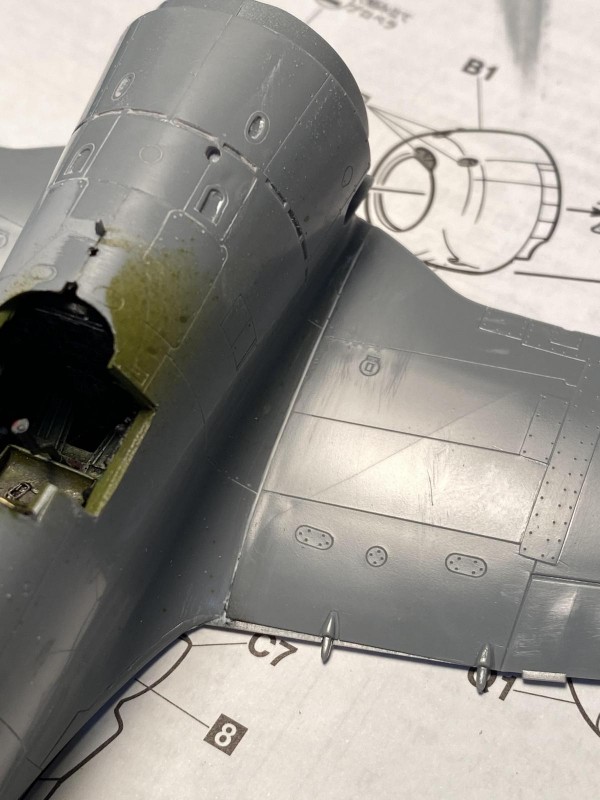
1. Seam filled with acrylic putty.
It took a few minutes to figure out how I was going to cover the cockpit for painting. The rectangular panels removed on either side of cockpit created an awkward masking situation, especially since the left side had a number of photoetch levers that I was worried about knocking off. Luckily I had saved the panels after I cut them out, so I temporarily glued them into the spaces using Elmer's glue. I permanently glued the front windscreen in place, and then glued the rear canopy in place using Elmer's again. The canopy became its own mask for the cockpit, and the Elmer's will allow me to remove the canopy after painting, hopefully with little or no damage to the fuselage.
-
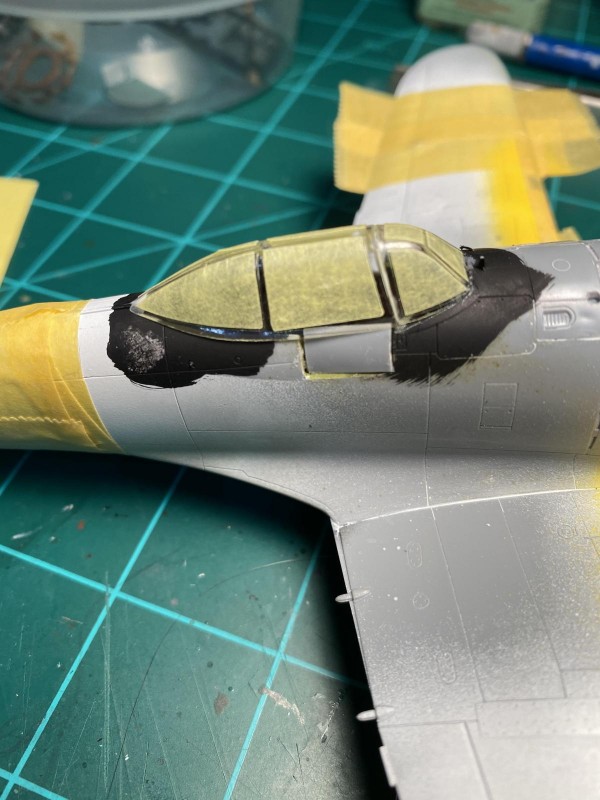
1. Original panels and canopy temporarily glued to protect the cockpit during painting.
I started the painting process by painting the areas that would be white using Tamiya Flat White. I masked these white areas with Tamiya tape, and then painted the leading edge of the wings using Tamiya Flat Yellow. Most of the diagrams show the rudder as a dark green, so I painted the rudder using Tamiya IJN Dark Green. Once all of this was dry, I masked off these areas.
-
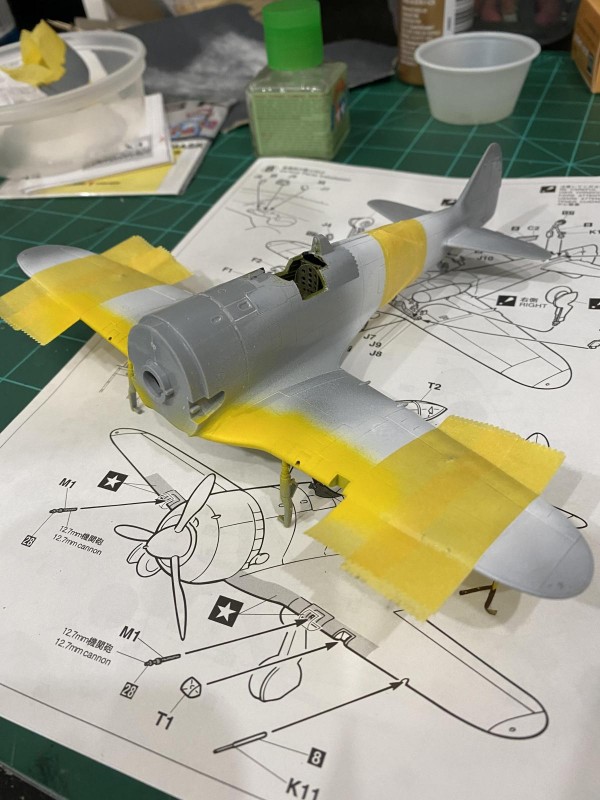
1. White painted and masked, yellow leading edges painted.
I wanted to do color variations as I was painting, so I started painting the belly of the plane with Tamiya IJN Gray. I then added some black to the IJN Gray to create a darker shade of the original color, which I sprayed in the center of panels on the belly in a somewhat haphazard manner. The contrast is a little stark at this point, but everything is blended together with a final very thin coat of the original color. This last coat, which is almost as thin as a wash, blends everything and still shows the color variations.
-
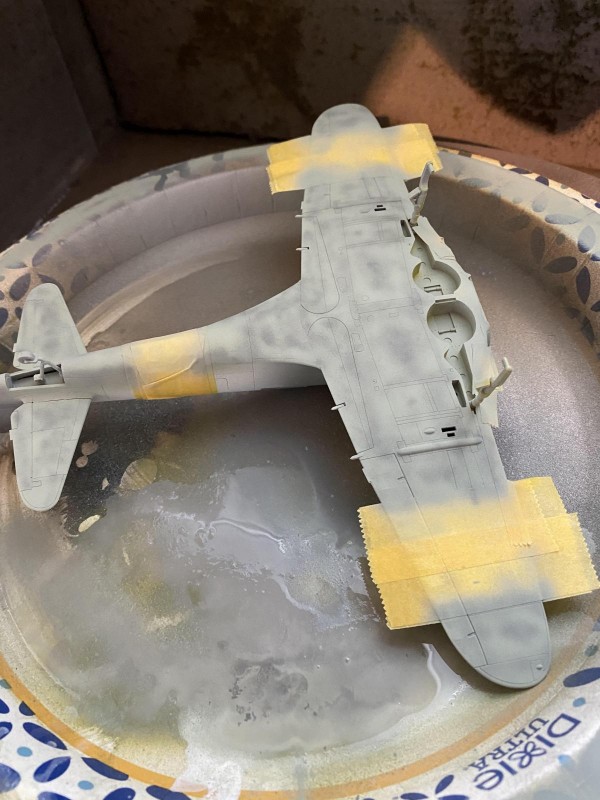
1. IJN Gray with dark gray contrast added.
-
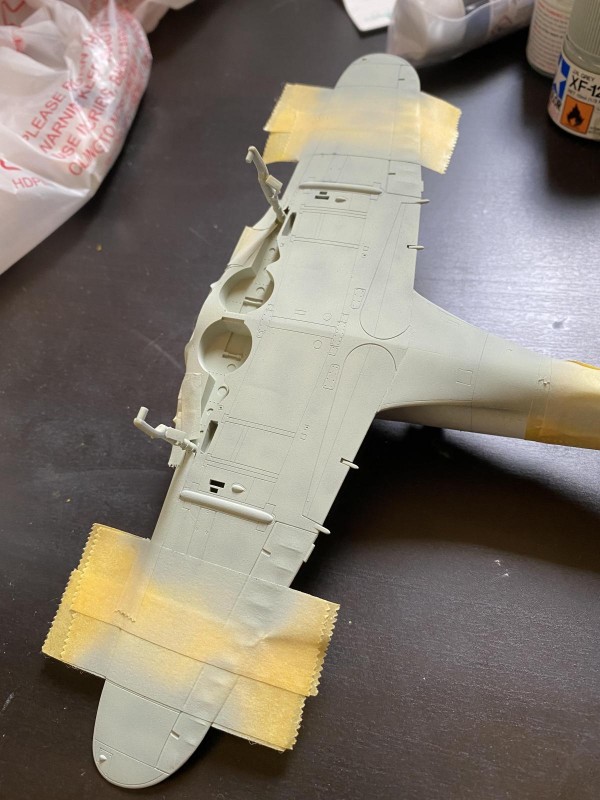
1. Very thin coat of IJN Gray reduces the contrast.
Once the belly was dry, it was masked off in preparation for the black used on the topside. I used the same technique on the topside that I used on the belly. I first used AK Real Color Nakajima Cockpit Green on the canopy to allow the correct color to show on the inside of the canopy. For the topside color, I started with a very dark gray mixed using a mixture of Tamiya Black and Tamiya Light Gray. I then sprayed very thin Tamiya Black in the center of panels & along panel lines in a random pattern, followed by a very thin, dark gray slightly lighter than the base color. This was also sprayed in a random pattern to highlight certain areas. Once everything had dried, I found there was not a lot of variation on the upper side of the plane, but I decided to let it simmer for a while and then decide if I needed to adjust the contrast on the upper surface. I removed all the masking and found there were no ridges from paint build-up and no bleeding under the tape. There were a couple of areas I will need to fix where I simply failed to insure the tape was covering everything and had the wrong color end up in the wrong place.
-

1. Not much contrast on the topside.
Overall, I am fairly happy with the paint. Tomorrow I plan to try to borrow my wife's Scan and Cut machine to cut masks for the markings and paint them myself. That will be the next chapter in this adventure.
Everyone stay safe.